You’ve got a small balcony, and you’re ready to turn it into a green oasis with minimal effort. Start by imagining a space with hardy plants like succulents, which thrive in 6-inch pots with little water, needing only 1-2 tablespoons weekly. Limited space? No problem; vertical planters can maximize your 3×5-foot area. Stick around to uncover practical tips for creating this easy-care retreat.
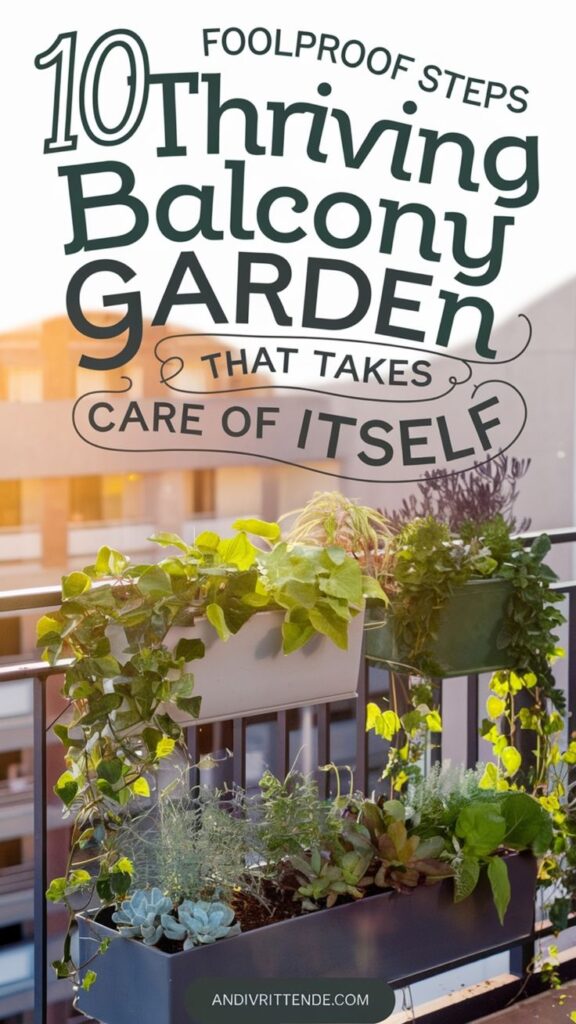
Contents
- 1 Choose Hardy, Drought-Tolerant Plants
- 2 Opt for Self-Watering Pots
- 3 Use Vertical Space With Wall Planters
- 4 Group Plants by Watering Needs
- 5 Incorporate Low-Care Succulents
- 6 Install a Simple Drip Irrigation System
- 7 Select Perennials for Year-Round Greenery
- 8 Utilize Multi-Purpose Plant Stands
- 9 Add Mulch to Retain Moisture
- 10 Pick Native Species for Easy Growth
Choose Hardy, Drought-Tolerant Plants
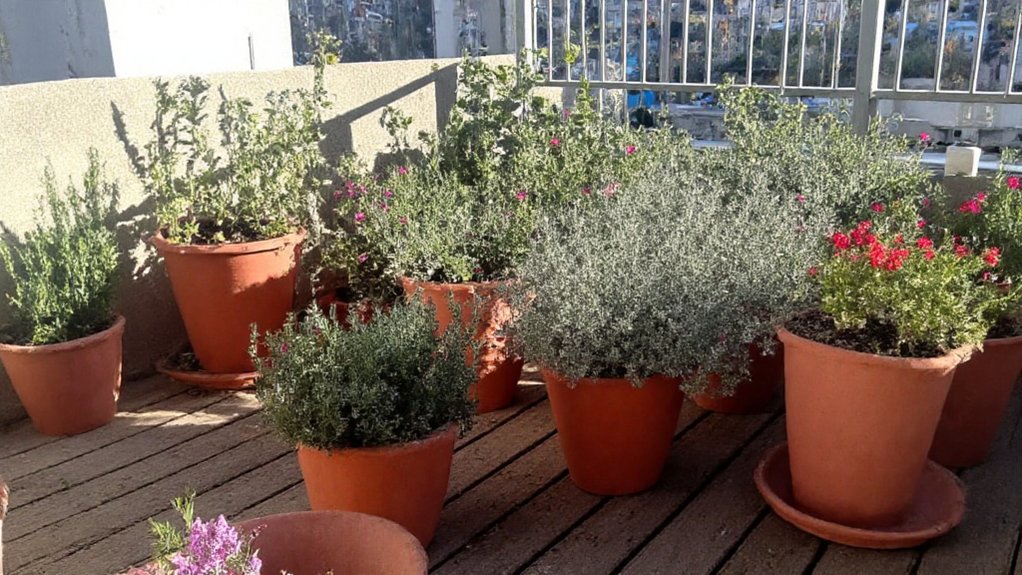
When selecting plants for a small balcony, opting for hardy, drought-tolerant varieties is a smart choice. These plants are naturally adapted to withstand periods of neglect, limited water, and varying weather conditions, making them ideal for busy individuals or those new to gardening. Examples include succulents like aloe vera and echeveria, as well as herbs like rosemary and thyme, which thrive in dry, sunny environments.
These resilient plants require minimal watering and can survive in small pots with well-draining soil, perfectly suiting the confined space of a balcony. Their low-maintenance nature means you can enjoy a green, vibrant space without the constant upkeep, allowing you to focus on enjoying your outdoor area rather than tending to demanding plants.
Opt for Self-Watering Pots
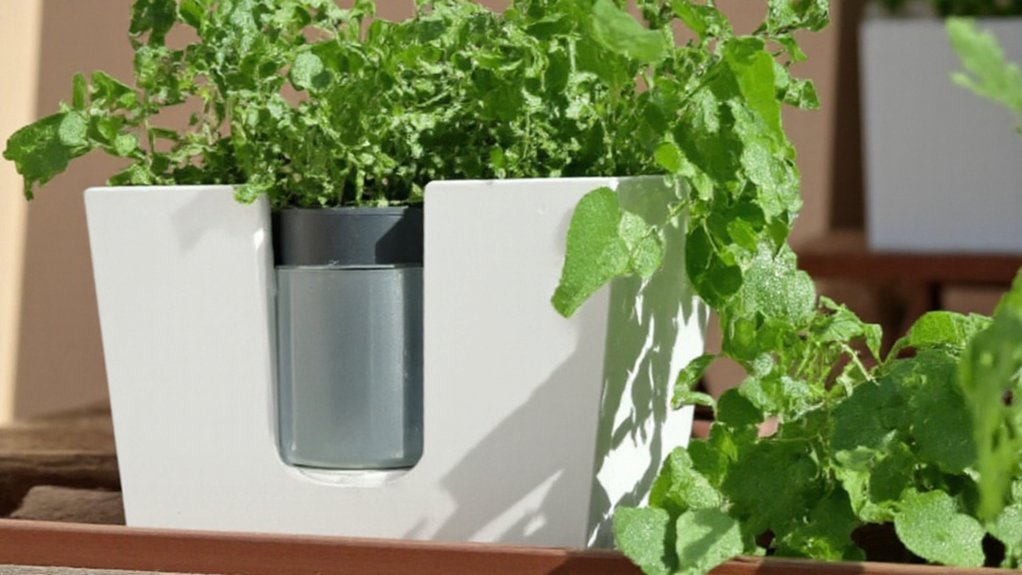
Self-watering pots are an excellent choice for small balcony gardens, especially for those with busy schedules or limited time for plant care. These innovative containers come with a built-in reservoir that holds water, allowing plants to draw moisture as needed through a wicking system. This means you won’t have to water your plants daily, as the reservoir can sustain them for several days or even weeks, depending on the pot size and plant type.
Use Vertical Space With Wall Planters
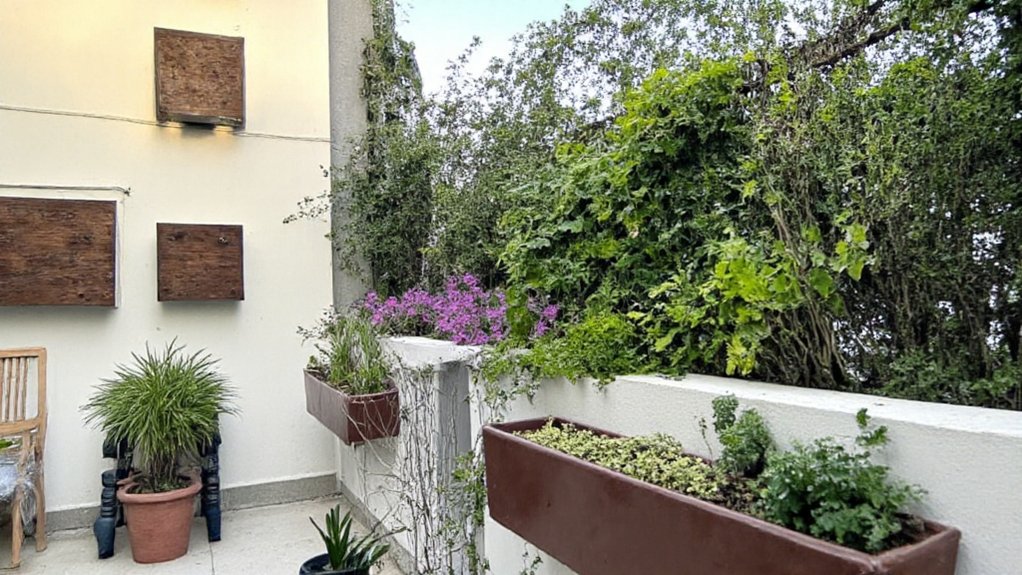
Utilizing vertical space with wall planters is an excellent way to maximize limited balcony areas. These planters can be mounted on walls or railings, allowing you to grow a variety of low-maintenance plants like succulents, herbs, or small flowering varieties without taking up valuable floor space. This approach not only enhances the aesthetic appeal of your balcony but also keeps the area uncluttered and functional.
Wall planters come in various designs, such as pockets, shelves, or modular systems, making them adaptable to different balcony sizes and styles. They are easy to install and maintain, often requiring minimal watering and care, especially when paired with drought-tolerant plants. This vertical gardening solution transforms bare walls into lush, green spaces, adding life and charm to your small outdoor area.
Group Plants by Watering Needs
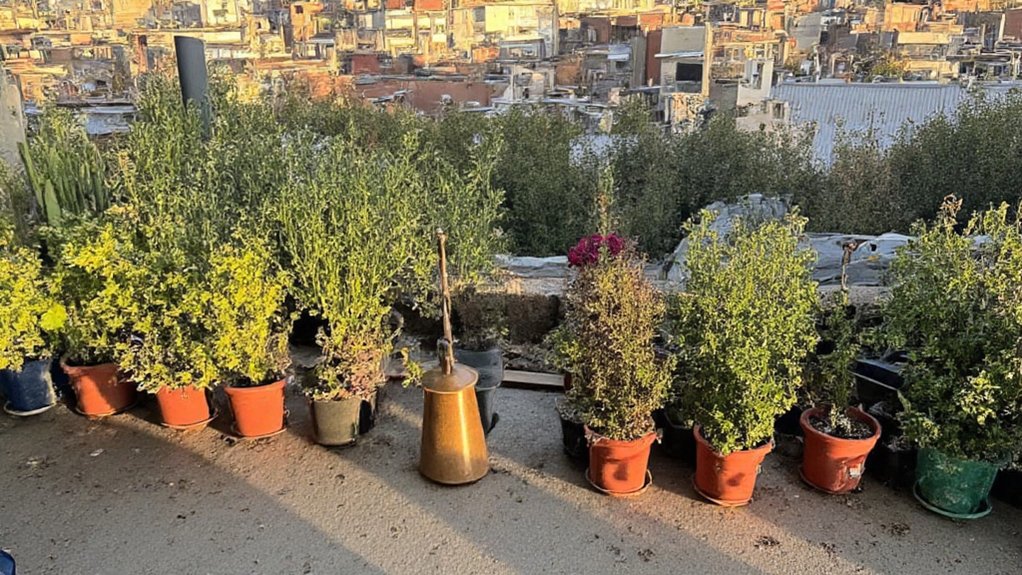
Grouping plants by their watering needs is a practical way to simplify care and guarantee they thrive on a small balcony. Plants like succulents and cacti require minimal watering, often only every few weeks, as they store water in their leaves or stems. In contrast, herbs like basil or flowers like petunias may need more frequent watering, sometimes every couple of days, especially in hot weather.
Incorporate Low-Care Succulents
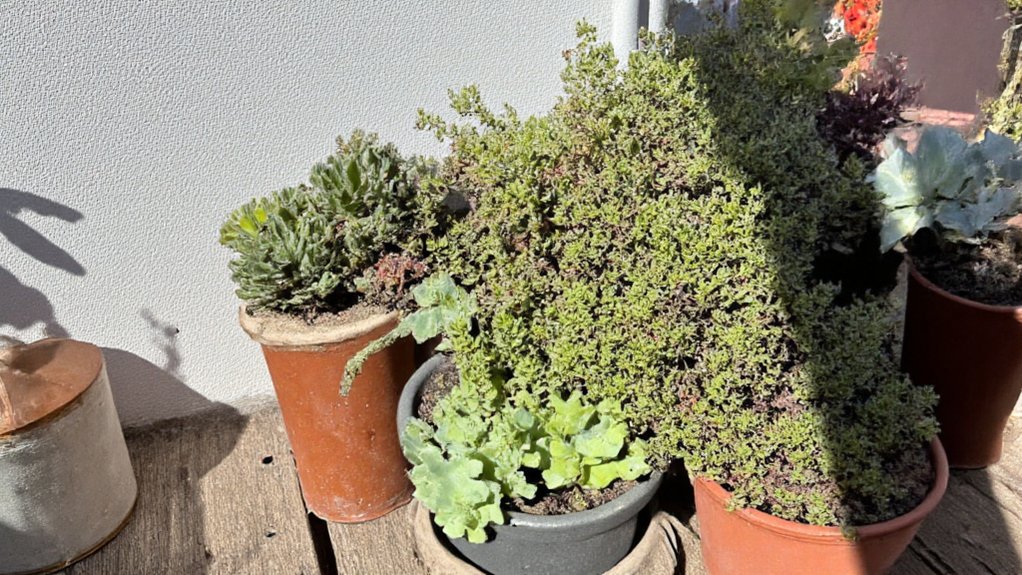
Succulents are an excellent choice for small balconies due to their low-maintenance nature and ability to thrive in limited space. These hardy plants store water in their fleshy leaves, allowing them to withstand periods of drought and require minimal watering—often just once every 1-2 weeks, depending on the climate. Their compact size and variety of shapes, colors, and textures also make them perfect for adding visual interest to confined areas, whether in small pots, hanging planters, or vertical gardens.
To incorporate succulents, choose varieties like Echeveria, Sedum, or Haworthia, which are particularly easy to care for and adapt well to balcony conditions. Place them in well-draining soil and make sure they receive plenty of sunlight, as most succulents prefer bright, indirect light or a few hours of direct sun. With minimal effort, succulents can create a lush, green vibe on your balcony without demanding constant attention.
Install a Simple Drip Irrigation System
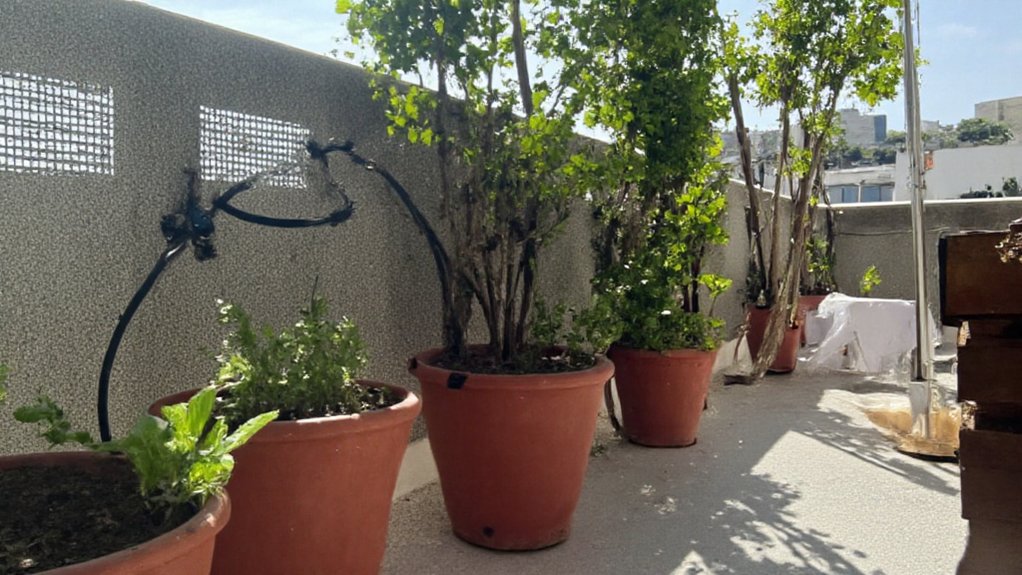
Installing a simple drip irrigation system is an excellent way to guarantee your low-maintenance balcony plants receive consistent watering with minimal effort. This system delivers water directly to the roots of your plants through a network of tubes and emitters, reducing water waste and preventing overwatering. You can set up a basic drip irrigation kit, available at most garden centers, by connecting it to a water source like a balcony tap or a reservoir with a small pump.
Start by laying out the main tubing along your balcony, securing it near your plant pots. Attach smaller drip lines or emitters to the main tube, positioning them close to each plant’s base. Many kits come with a timer, allowing you to automate watering schedules, which is especially handy for busy individuals or during hot weather. This setup not only saves time but also keeps your plants healthy with consistent moisture levels.
Select Perennials for Year-Round Greenery
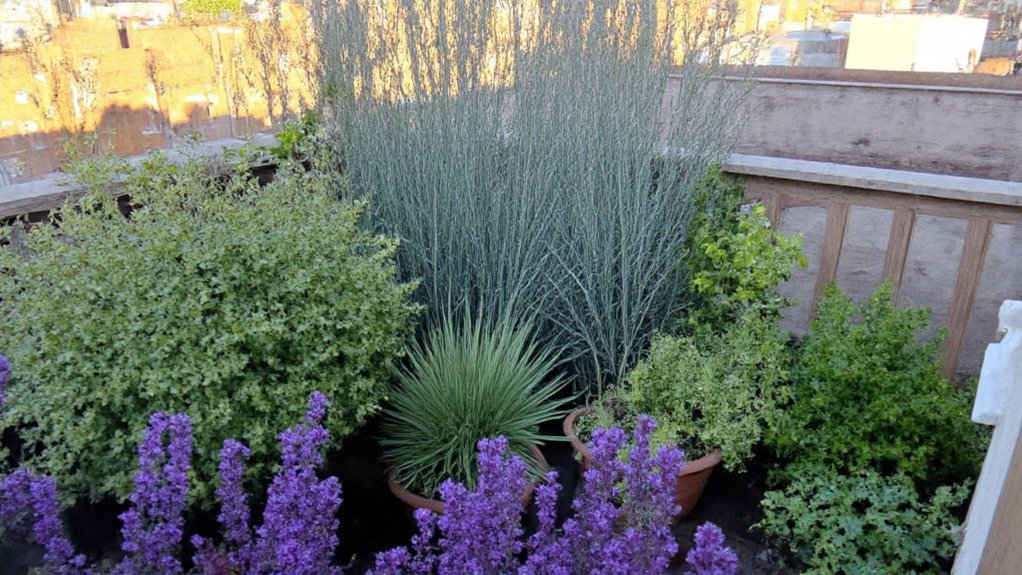
Selecting perennials for your small balcony garden guarantees year-round greenery with minimal effort. Perennials are plants that live for more than two years, returning each season without the need for replanting. Choosing hardy, low-maintenance varieties suited to your climate and balcony conditions can provide consistent color and texture, even in limited space.
Opt for perennials like lavender, which thrives in sunny spots and offers fragrant blooms, or hostas, which are ideal for shaded balconies with their lush foliage. Other great options include sedum, a drought-tolerant succulent, and ornamental grasses like fescue, which add movement and require little care. By focusing on perennials, you create a sustainable, evergreen balcony oasis that endures through the seasons.
Utilize Multi-Purpose Plant Stands
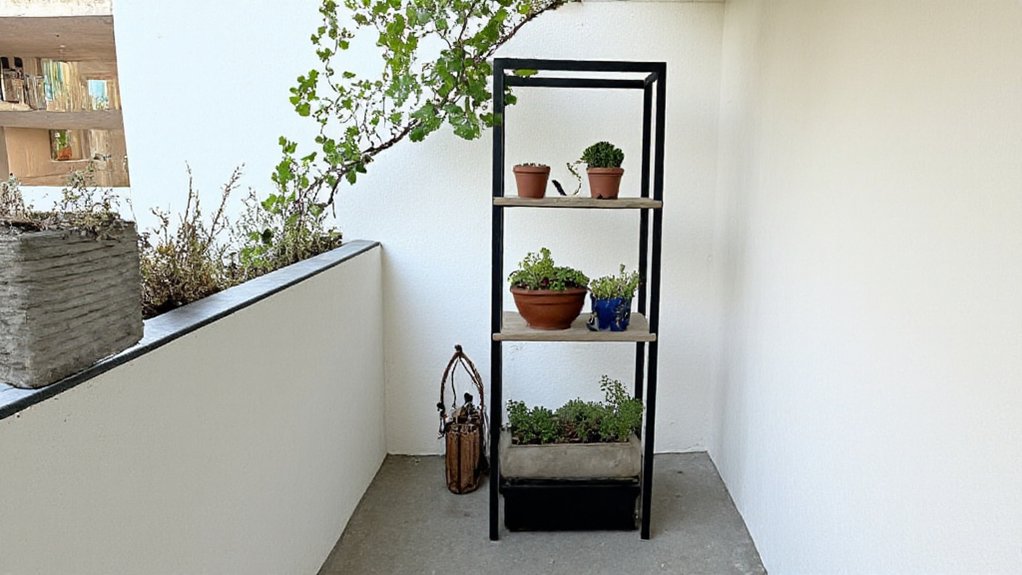
Utilizing multi-purpose plant stands is an excellent way to maximize space on small balconies while keeping your greenery organized and visually appealing. These stands often come with multiple tiers or shelves, allowing you to display a variety of plants vertically without taking up much floor space. Many designs also include additional features like storage compartments or hooks for hanging tools, making them both functional and stylish.
Beyond saving space, multi-purpose plant stands can serve as decorative elements, adding structure and height to your balcony garden. Choose stands made from weather-resistant materials like metal or treated wood to guarantee durability in outdoor conditions. By strategically placing these stands in corners or along railings, you can create a lush, layered look that transforms your small balcony into a green oasis.
Add Mulch to Retain Moisture

Adding mulch to your potted plants on a small balcony is a simple and effective way to retain moisture in the soil. Mulch acts as a protective layer over the soil, reducing evaporation and helping the plant stay hydrated for longer periods, especially during hot or windy weather. This means you’ll need to water less frequently, making plant care even more low-maintenance.
You can use organic mulch like bark, wood chips, or compost, or opt for inorganic options like pebbles or gravel, depending on the look you prefer. Just spread a thin layer, about 1-2 inches thick, over the soil surface, ensuring it doesn’t touch the plant’s stem to prevent rot. This small step not only conserves water but also helps regulate soil temperature and suppress weeds in your pots.
Pick Native Species for Easy Growth

Choosing native species for your small balcony garden is a smart and low-maintenance option. Native plants are naturally adapted to the local climate, soil, and environmental conditions, which means they require less watering, fertilizing, and overall care compared to exotic or non-native varieties. They are also more resistant to local pests and diseases, reducing the need for chemical treatments.
